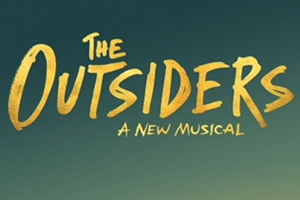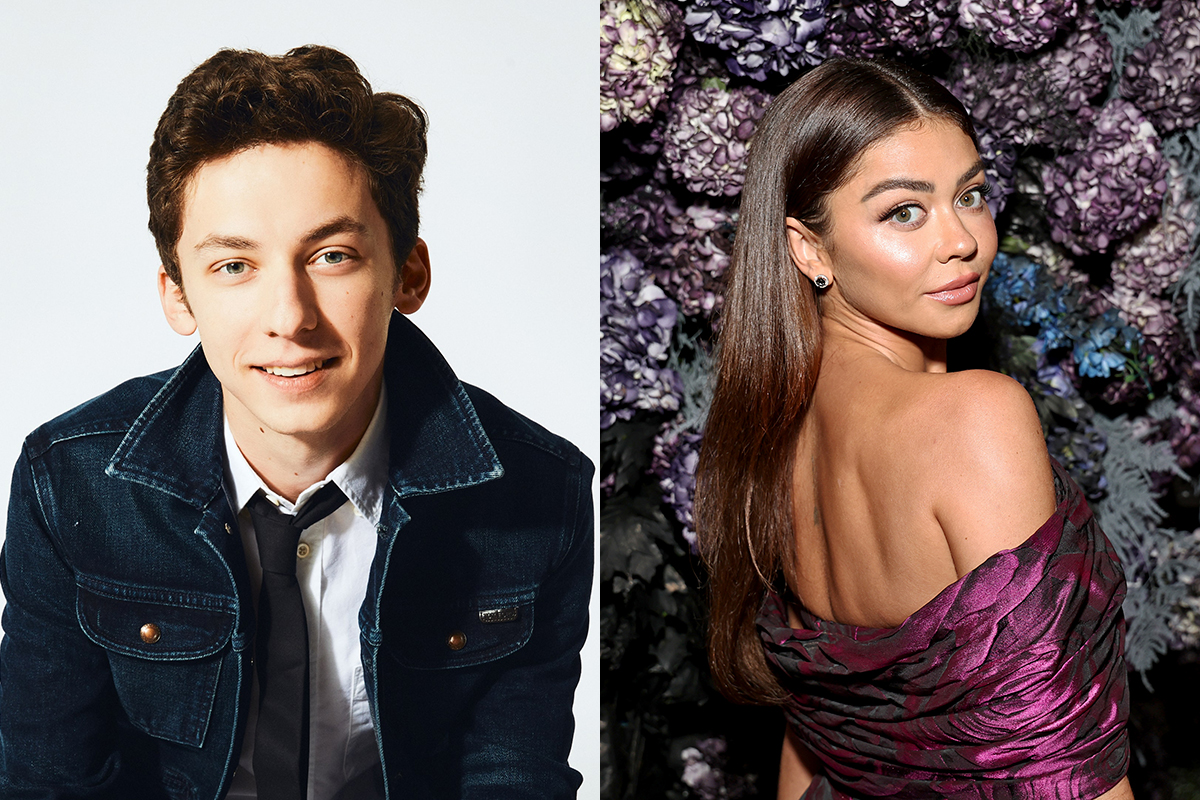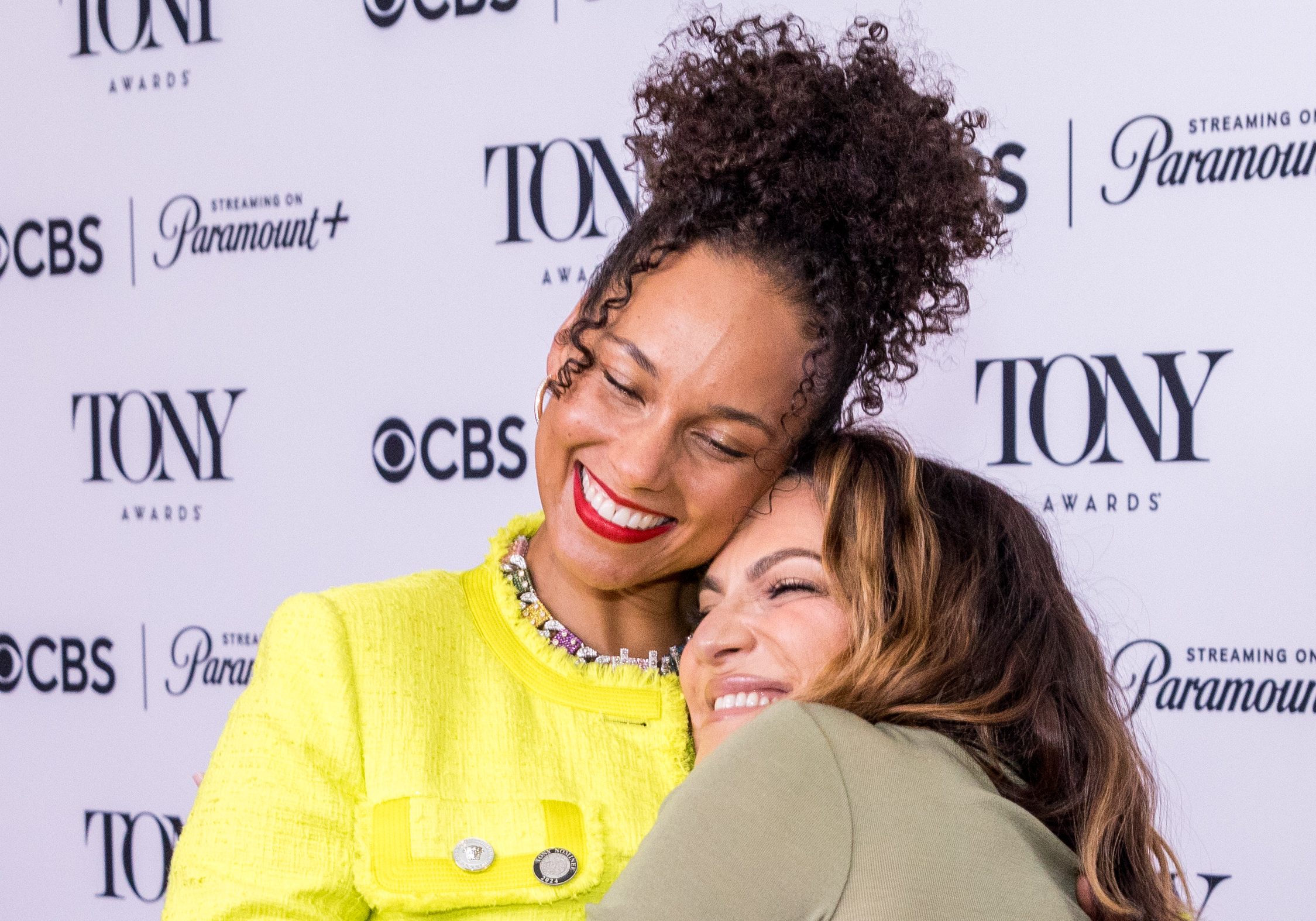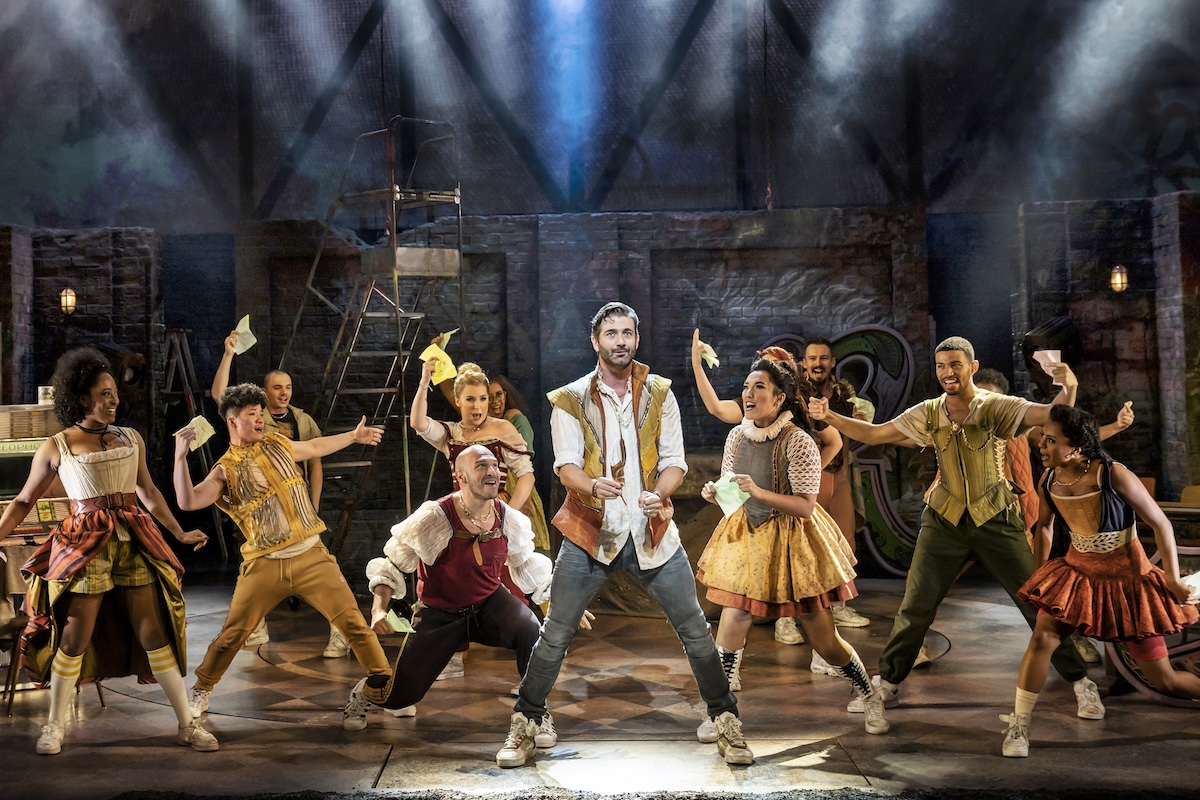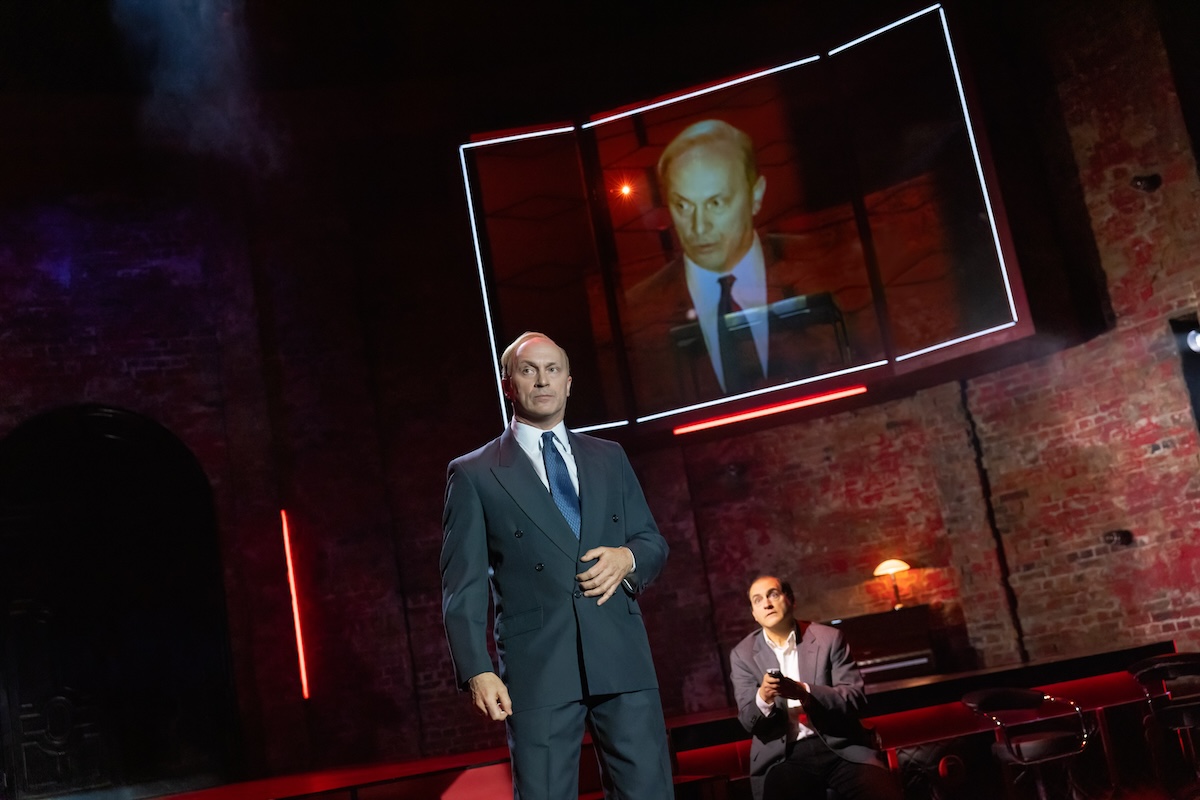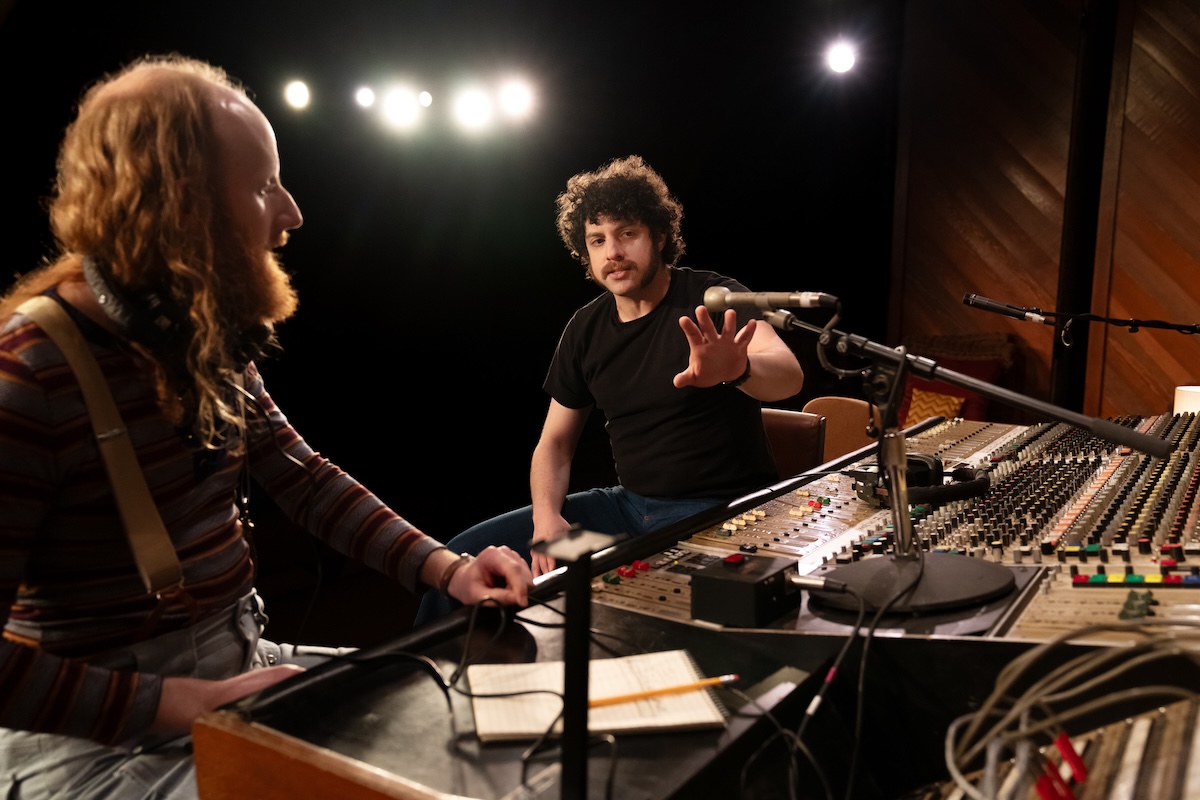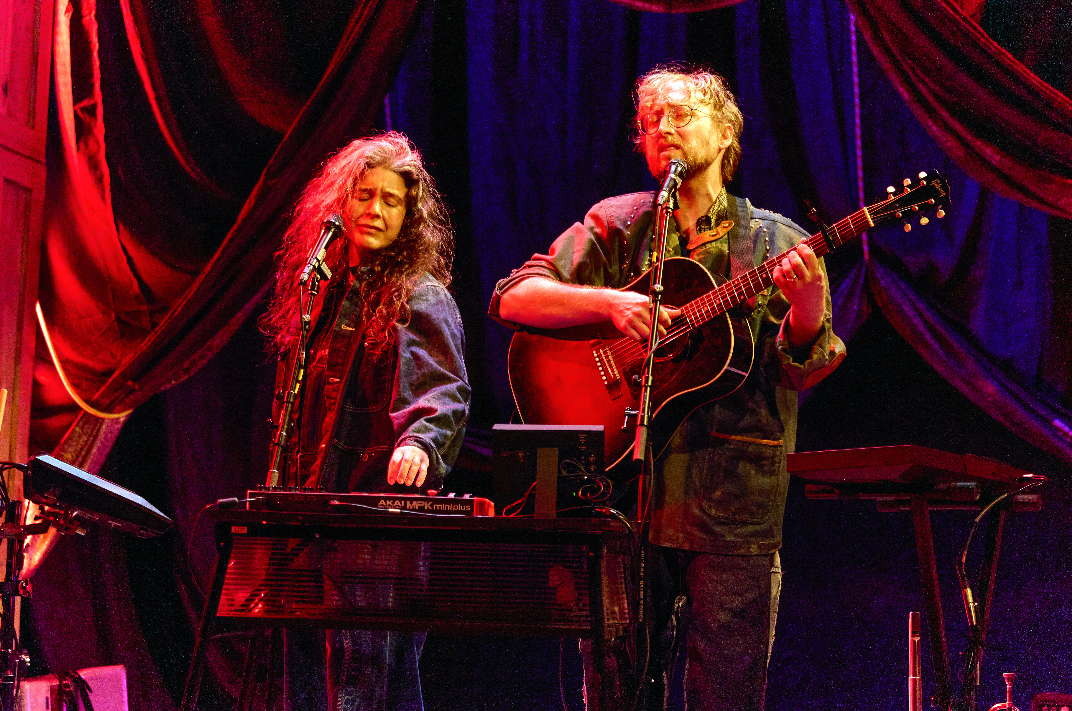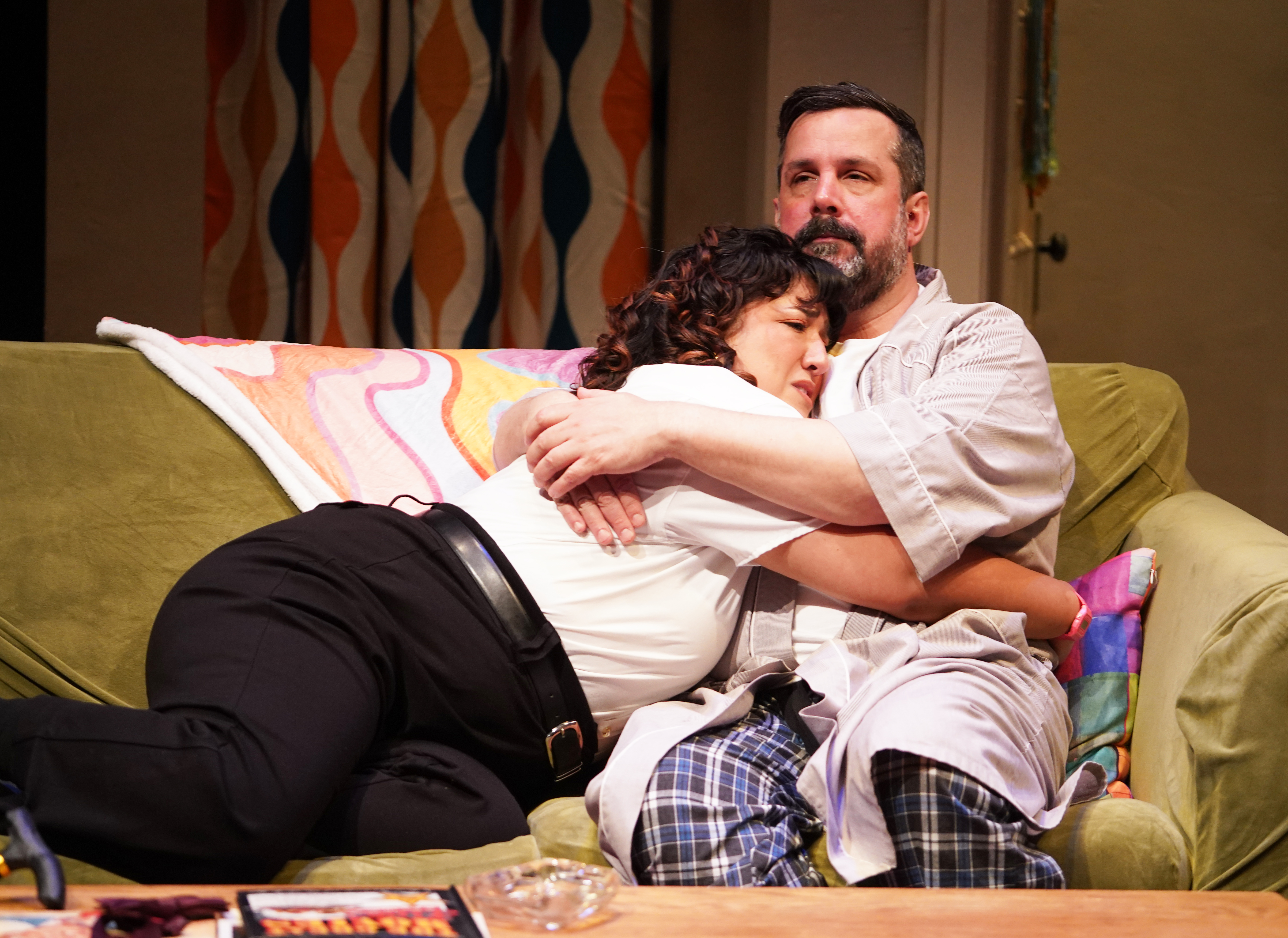How to Create a Rumble in the Rain, With The Outsiders Creators Danya Taymor and the Kuperman Brothers
In the Broadway musical version of S.E. Hinton’s The Outsiders, director Danya Taymor notes, the bodies of the actors are as important an element as the actual design. So when she and choreographers Jeff and Rick Kuperman were coming up with concepts for the show’s climactic “Rumble,” they needed to figure out a way to make it look both safe and realistic — which also meant rain, dirt, and blood flying alongside the punches the characters were throwing. How did they do it? Find out here.

(© Matthew Murphy)
This conversation has been condensed and edited for clarity.
In The Outsiders, staging, choreography, fighting, and movement seem so intrinsically connected. How did you go about shaping all of that?
Danya Taymor: I wanted movement language and violence language to be created by the same brain. We didn’t want to have a fight choreographer and then a choreographer. I had met Rick and Jeff during the pandemic, and when I got this project, that meeting immediately came back to me. The other thing that was important for me was the aesthetic of bodies being one of the main scenic elements of the show, everything wanting to come from these young characters.
Jeff Kuperman: I remember reading the script and being excited because I didn’t know what we were going to do with it. It’s written almost cinematically. They jump on a train and escape into the night. That’s going to be a fun challenge. When we got to the Rumble, one of the stage directions that stuck out to me was that there’s no music. It’s just the sounds of fists detonating into flesh. It became clear that sound design was going to be super important. After we had done a workshop and it became clear that the idea was working, we had to think about how to proliferate the idea backwards into all the instances of violence. We found the one thing we wanted to explore and unlocked a movement language based on that.
How was that all divided up amongst yourselves?
Danya: We worked together a lot when we did the production in La Jolla, and then we were able to do some workshops between La Jolla and Broadway where we did even more research and development. We got to have a two-week movement workshop with the writers in the room, so by the time we got to Broadway, we had the vocabulary. Sometimes, Rick and Jeff would be working, and I would take other actors and do book scenes, and then we would put it all together. I feel like we share a brain, and the way the three of us work across lighting, sound, costumes, is fluid and unique. It’s nice to have two other people who you really trust and who you know are telling the same story. They’re brothers, but I like to joke that I’m the third sibling. And being older gives me the power.
Rick Kuperman: Danya is simultaneously the oldest and the most Ponyboy. It’s an extremely special collaboration, and I’ve never experienced anything like it in my life. To know that your first instinct is aesthetically in line 99 percent of the time gives you a sense of freedom to make bold choices. I think that sentiment is shared.
Tell me about creating and staging the Rumble, with the rain and their dancing on…I’m calling it AstroTurf, because I don’t know what the official name is.
Danya: It’s this substance called EPDM, which is like playground rubber and looks like dirt. That all came from the text. [Book writer] Adam [Rapp] has this incredible stage direction of the rumble that describes it being in the rain, with people getting muddy and bloody and bruised. I took it seriously that the floor had to be like dirt, and that meant very little automation. It needed to be emotional, spectacular, visceral, all these things, and we worked back from there. They said it was dirt, so we have dirt, they say it’s rain, so we need to have rain. And we have producers who are willing to go there with us.
Jeff: We tried different muds, we tried different bloods, different amounts of blood. We needed to make sure what we were doing was safe and repeatable eight times a week. We did technical workshops where we went to the special effects studio and tried out different granules of cork or EPDM until we found the right one. We really did our homework, so that by the time we got to La Jolla, we had worked out most of the choreography and sound design, and by the time we got to Broadway, we weren’t scared that it wasn’t going to work. The proof of concept was there, and it was just about executing it at a high level.
The Outsiders is obviously a property that has meant a lot to a lot of people for a very long time. How seriously do you take the responsibility of maintaining its importance?
Danya: I take it super seriously. I tried to watch it with the eyes of my 14-year-old self and make something that my 14-year-old self would be moved by and think was real and authentic. The whole goal is to remind people that words matter, that if you love somebody and you’re afraid to say it, you should say it, because it’s important.
Something else that felt important is knowing that Susie Hinton wrote it when she was 15. There’s something juvenile, and I use this word in a very positive way, in the story, because it was written by a young person. That truth and raw edge of storytelling is so important to maintain. I think it’s why young audiences are coming, why they’re responding, and why they’re coming back.
Rick: The idea of feeling like an outsider is a universal human experience. We’re all members of a family or a community or a political party. We all have these identities at different degrees of the circle. It is a universal challenge to figure out how you’re going to be true to yourself as an individual, but also a member of this larger group. That’s why the story has a huge amount of appeal wand why it’s still relevant today. The truth about the human experience isn’t going anywhere.
Jeff: Sitting through our previews and absorbing the reaction of the audience made me proud to be part of this production. I think it’ll stick in so many people’s heads as a formative experience and show them what the boundless possibility of theater is. I hope it inspires a new generation to love the theater and keep coming back to it.
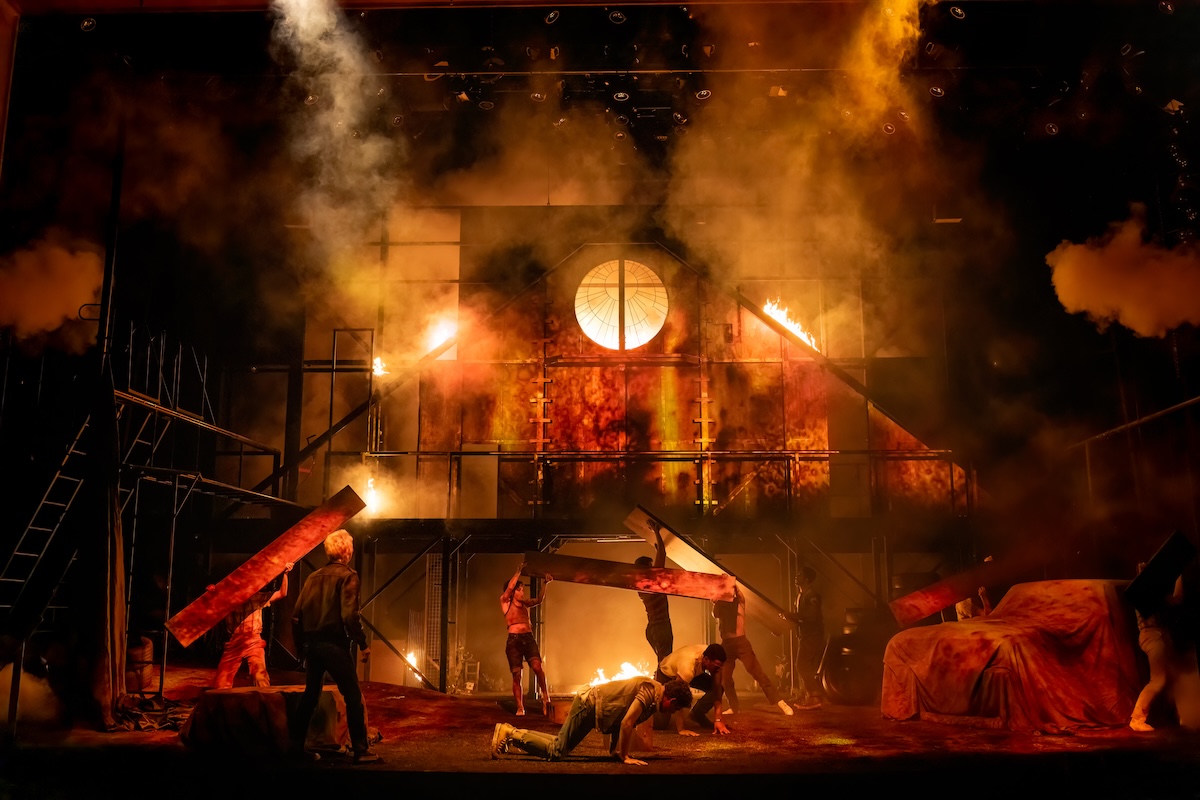
(© Matthew Murphy)



